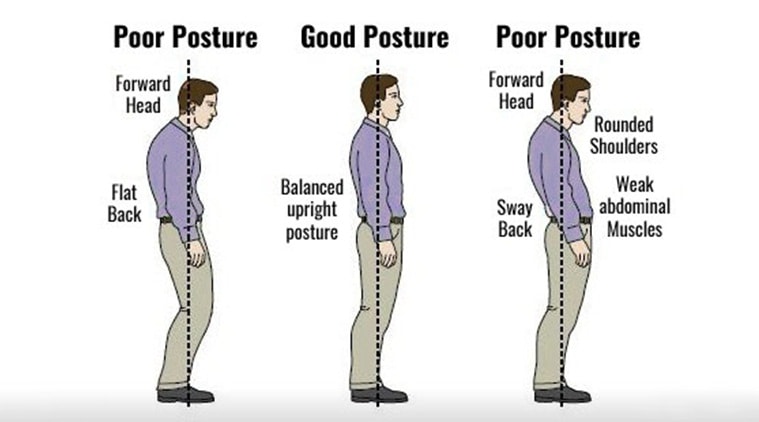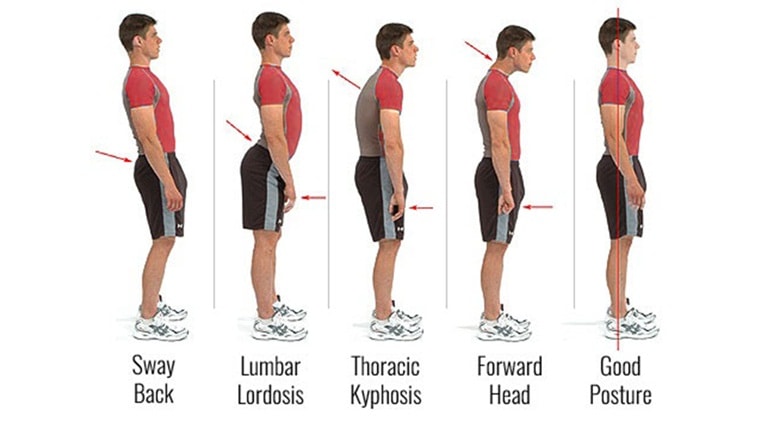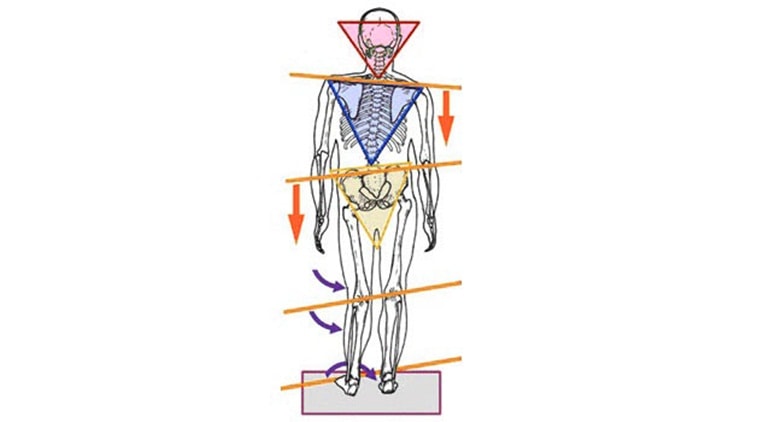- India
- International
Posture Perfect: Are you standing the right way?
Your posture is how the world sees you, and strengthening your posture is an intelligent habit to make you look and feel better.
Our posture is a reflection of the “position” of the musculoskeletal structure (in lay man’s terms, the way we stand, sit or walk) of our body as it is held upright against gravity.

So, what is a good posture?
A good posture means your bones are properly aligned and your muscles, joints and ligaments can work as nature intended. It means your vital organs are in the right position and can function at peak efficiency. A good posture helps contribute to the normal functioning of the nervous system.
Without a good posture, your overall health and total efficiency may be compromised. Since the long-term effects of poor posture can be on your bodily systems (such as digestion, breathing, muscles, joints and ligaments), a person who has a poor posture may often be tired or unable to work efficiently or move properly.

But, what is a poor posture?
Visible signs of poor posture in people who slouch include tilting the head forward, rounding the upper back and arching the lower back. These positions exaggerate the spine’s natural curves. The opposite type of bad posture results in a posture that is is too upright.
What are the signs of a poor posture?
Fatigue — your muscles have to work hard just to hold you up if you have a poor posture. You waste energy just moving, which leaves you without the extra energy you need to go about your day in an energetically.
Tight, achy muscles in the neck, back, arms and legs — by this stage, there may be a change in your muscles and ligaments and you may have a stiff, tight painful feeling. More than 80 per cent of the neck and back problems are the result of tight, achy muscles brought on by years of bad posture.
Joint stiffness and pain — at risk for “wear and tear” arthritis, or what is termed degenerative osteoarthritis. Poor posture and limited mobility increase the likelihood of this condition in later years.

So, how can you perform a self-assessment of your posture, and whether it’s correct or not? There are a couple of things that you can do.

Try the Mirror Test
Stand facing a full-length mirror and check to see if:
1. Your shoulders are levelled
2. Your head is straight
3. The spaces between your arms and sides seem equal
4. Your hips are levelled, your kneecaps face straight ahead
5. Your ankles are straight
Then stand with your side towards the mirror. This is much easier to do with the help of a friend or family member, or by taking a photo of yourself.
Check for the following:
1. Head is erect, not slumping forward or backwards
2. Chin is parallel to the floor, not tilting up or down
3. Shoulders are in-line with your ears, and not drooping forward or pulled back
4. Stomach is flat
5. Knees are straight
6. Lower back has a slightly forward curve (not too flat or not curved too much forward, creating a hollow back).
How to improve your posture
In case you find that your posture does not match the above checklist, there are ways to improve your posture too. Try the following steps:
* When standing — hold your head high, chin firmly forward, shoulders back, chest out, and stomach tucked in to increase your balance. If you are someone who stands all day, rest one foot on a stool or take breaks to get off your feet for a while.
* When sitting — use a chair with firm low-back support. Keep the desk or table-top elbow high, adjust the chair or use a footrest to keep pressure off the back of the legs, and keep your knees a little higher than your hips. Get up and stretch frequently — every hour if you sit for long periods of time. Do not sit on a fat wallet; it can cause hip imbalance.
* When working on a computer — take a 1-2 minute task break every 20 minutes when you work at a computer screen. Keep the screen 15 degrees below eye level. Place reference materials on a copy stand even with and close to the terminal.
* When sitting in the car — adjust the seat forward so your knees are higher than your hips. Put a small pillow or cushion in the small of your back.
* When sleeping — sleep on your side, with your knees bent and head supported by a pillow, to make your head level with your spine. Or, sleep on your back, avoiding thick pillows under your head. Use a small pillow under your neck instead. Don’t sleep on your stomach.
* When lifting — let your legs do the work in order to prevent injury to your lower back. Stand close to the object, then where possible squat down and straddle it. Grasp the object, and slowly lift the load by straightening your legs as you stand up. Carry the object close to your body.
* When bending — never twist from the waist and bend forward at the same time. To lift or reach something on the floor, bend the knees while keeping the back straight.
Your posture is how the world sees you, and strengthening your posture is an intelligent habit to make you look and feel better, avoid injury, and exercise regularly to stay active and pain free. It all begins with an postural assessment with our body.
May 22: Latest News
- 01
- 02
- 03
- 04
- 05
































